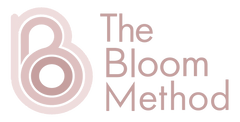Must-dos for Pregnant Mamas
4 must-dos for expecting moms
There are lots of things that come with having a happy and healthy pregnancy, from taking your prenatal vitamins to finding ways to stave off morning sickness, to prepping for baby's arrival and documenting the experience with your loved ones. While all of that is so important, there are a few concrete steps that we recommend to make your pregnancy as comfortable as possible.
Have a go-to pelvic floor therapist
Keep a knowledgeable and trustworthy physical therapist on speed dial throughout your pregnancy (and beyond). A pelvic floor physical therapist can help you address a number of common pregnancy injuries and discomforts such as diastasis recti, rib pain, back pain, sciatic pain, hip pain, sacroiliac joint pain, pubic bone pain, urinary leakage, constipation, pain during sex, and neck pain. There are a variety of treatments and rehabilitative exercise options that you can discuss with your physical therapist, both in-person and virtually. Manual treatment, core strengthening, pelvic floor strengthening, scar massage from previous tearing/episiotomy/c-section, and safe exercises that can help prepare the body for delivery and faster postpartum recovery are just some of the options that a physical therapist offers to pregnant women.Although most physical therapists are trained to address these issues, we would recommend finding a doctor who specializes in pre and postnatal therapy or the pelvic floor, like our favorite pelvic floor guru’s Modern Mommy PT.
What is the pelvic floor?The pelvic floor is a group of muscles that stretch from your tailbone to your pubic bone. It is the “floor” of your pelvis. These muscles support the organs above them, control when waste is passed, provide tone and satisfaction during sexual intercourse, stabilize the back and pelvis with the help of the abdominal muscles, and support a baby while pregnant. The pelvic floor muscles are known as voluntary muscles, meaning that they can be told when to tighten or when to relax and let go.
See a chiropractor on a regular basis
Many changes happen to a woman’s body during pregnancy, including changes that can cause misalignment and discomfort. Protruding abdomen and increased back curve, pelvic changes, and postural adaptations are very common as a baby grows and the body adapts. Pelvic alignment is important to allow the baby to have room to develop, get into the correct position for delivery, and help prevent breech.We suggest seeing a chiropractor on a regular basis to help the body adjust to these changes. Chiropractors oversee the maintenance of the spinal column, discs, relates nerves, and bone geometry without the use of surgery or drugs. There are many benefits to seeing a chiropractor aside from adjustments such as controlling symptoms of nausea, reducing the length of labor and delivery, relieving back, neck, or joint pain, and preventing a potential c-section, and maintaining an overall healthier pregnancy. You can read more here about chiropractic care during pregnancy from the American Pregnancy Association.
Try myofascial massage
Our third recommendation is myofascial massage (also known as myofascial release or bodywork), which is a special type of bodywork that helps treat the pain caused by sensitivity and tightness in the myofascial tissue that surrounds and supports the muscles throughout the body. Pain is normally concentrated in one specific area called a “trigger point.” These points can be hard to find, resulting in therapy to be required over a larger area or muscle and tissue instead of a single point. However, if you see a myofascial therapist on a regular basis, you may be able to keep those trigger points in check.Most women experience back and pelvic pain during pregnancy due to weight gain and the shift in the center of gravity. This shift challenges the structural integrity of the woman’s body, which can cause misalignment issues. These strained and compressed areas are typically the lumbar spine, lumbosacral joints, sacroiliac joints, pubis symphysis, and hip joints. The myofascial therapist performing the massage feels for tight or stiff areas and applies mild pressure to that area to massage and stretch it out. They will repeat this multiple times to that area until they feel the tension has been released. Myofascial massage/release can be performed by a massage therapist as well as some chiropractors and traditional medical practitioners.
Incorporate The Bloom Method into your daily activities with Studio Bloom
The Bloom Method is a unique prenatal and postnatal workout system that combines cutting edge-core techniques, breathing practices, functional movements, strength training, and strength training into one life-changing exercise method. Our method is the #1 prenatal fitness method recommended by doctors, midwives, doulas, and physical therapists. Women can expect to stay fit and build strength during pregnancy, train their mind and body for birth, and heal their postpartum bodies. Studio Bloom is our online studio delivered via a monthly and annual subscription service that gives members access to 100+ workouts, recipes (fertility, pregnancy, postnatal and baby’s first foods), meditations, stretching, pain management, monthly calendars, and more! We recommend starting with the Core Foundations and then moving to BirthPrep and CoreFORM. Not interested in a monthly subscription? You can purchase the 90-day BirthPREP Program, which will allow you to move through the Bloom’s Core Foundations and BirthPREP classes, along with bonus classes that will benefit you during this prenatal stage.



